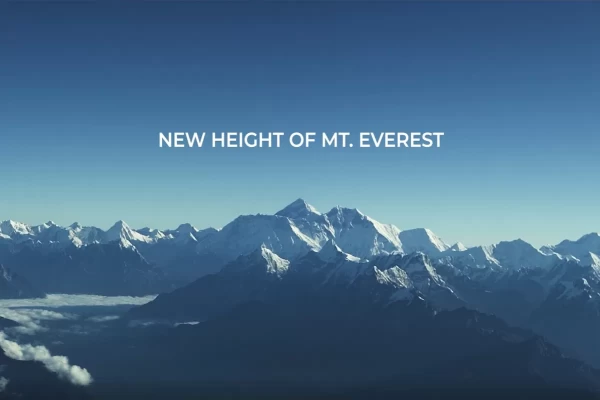Mount Everest Grows by Nearly a Meter

Measuring the height of Mount Everest was never an easy task, and since the first survey was conducted in 1847 by the English-India surveyor, the precise height of Everest had always been contested resulting to conduct many surveys for 170 years. However, Nepal permanently settled with the findings from 1954, the survey conducted in India; although new findings were done later years.
In 2011 Nepal aggressively participated in the homework to find the actual height of Everest and later with the joint team from Nepal and China conducted the new survey with the help of GPS to record the precise position utilizing the network of satellites and ground-penetrating radar to measure the snow underneath to mark the one and the final height as 8848.86 meters.
The official height of the Everest was announced in Kathmandu and Beijing simultaneously in a program attended by Nepal’s Foreign Minister Pradeep Gyawali. The new height confirmed by the Nepalese and Chinese government will not permanently settle the question of how tall is the world's tallest mountain forever.
|
Year |
Surveyor |
Height |
|---|---|---|
|
1847 |
English-India Survey |
8778m |
|
1849-1850 |
English-India Team |
8840m |
|
1880-1883 |
English-India Team |
8882m |
|
1946-1953 |
Surveyed by India |
8848m |
|
1966-1968 |
Surveyed by China |
8850.32m |
|
1975 |
Surveyed by China |
8848.13m (On Rock) |
|
1992 |
Surveyed by China and Italy |
8846.27m (On Rock) |
|
1998 – 1999 |
Surveyed by USA and China |
8850m (On Snow) |
|
2004 |
Italy |
8848.5m (on Rock) |
|
2005 |
China |
8844.43m (On Rock) |
|
2020 |
Nepal and China |
8848.86 |
Nevertheless, Everest is ever-growing and shrinking due to the tectonic plate collision between the Indian Plate and the Eurasian plate that is assumed to start 50 million years ago with an estimated average uplift of roughly 10 millimeters a year in the northwestern sections of the range, and around a millimeter a year at Everest.
The rock continues to rise above due to erosion against the upward progression the sediments get washed due to wind and water scour on the surface that eventually flushes through the Ganges and Brahmaputra rivers.
